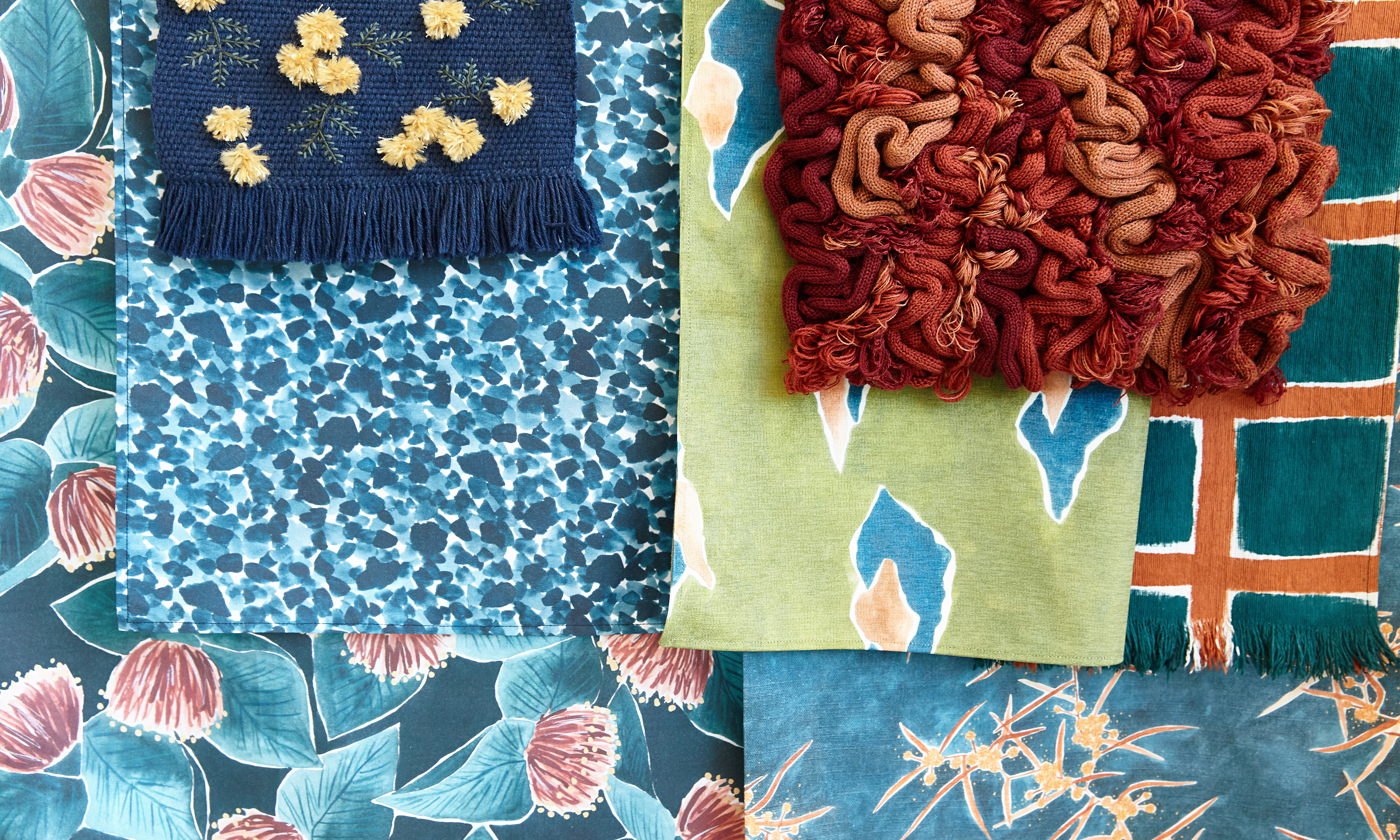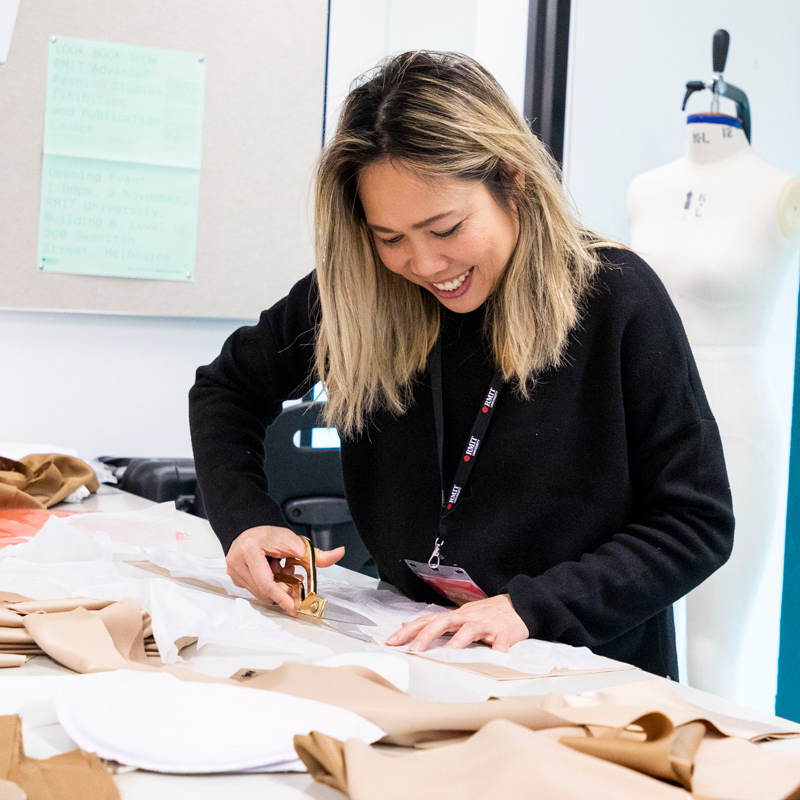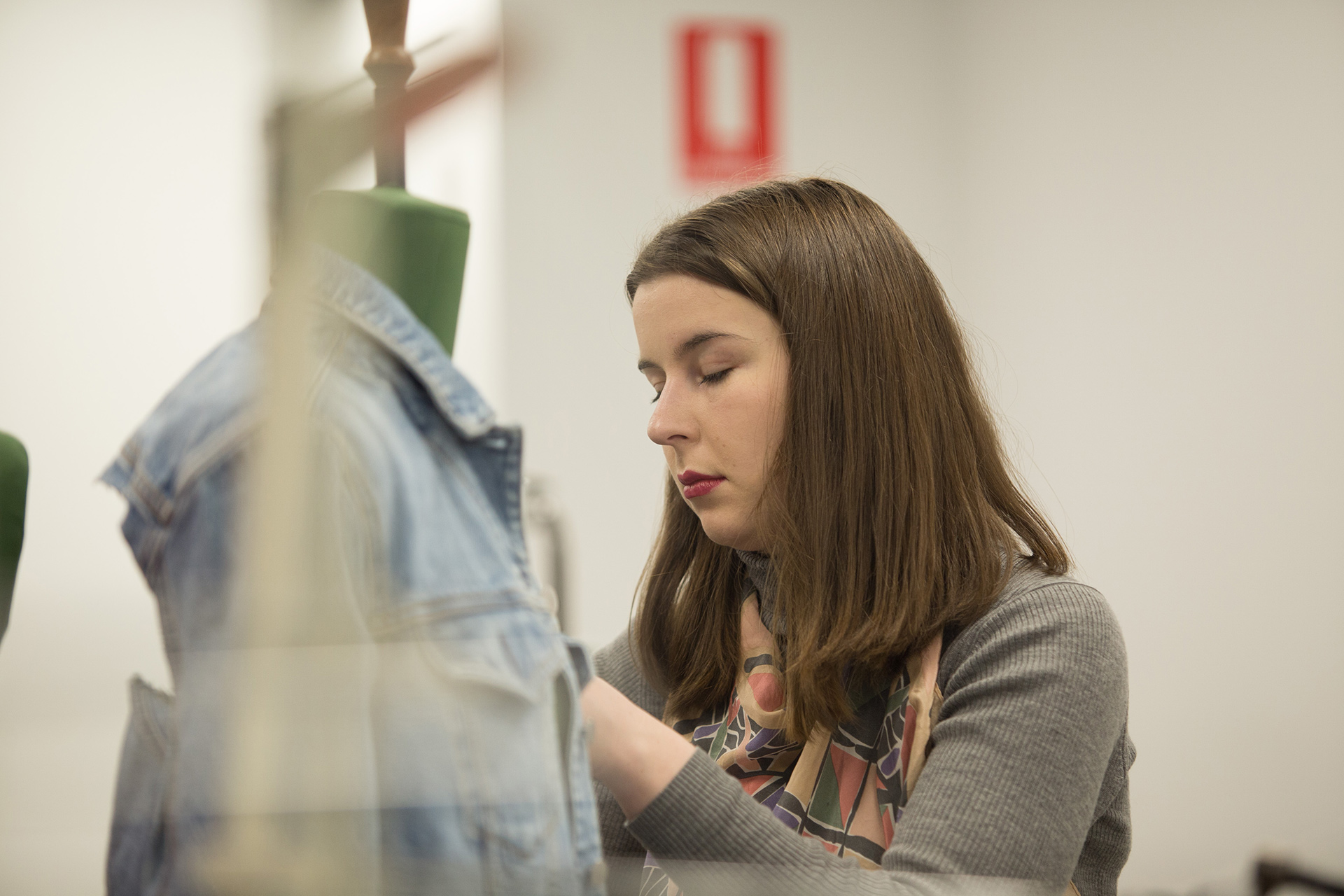
 Cutting fabric in RMIT Brunswick fashion design studio.
Cutting fabric in RMIT Brunswick fashion design studio.
Switching high-waste, high-carbon practices for sustainable methods is arguably the most prominent change facing the fashion industry currently. In Australia alone, 6000kg of clothing is dumped in landfill every 10 minutes, according to the ABC’s War on Waste.
Luckily, tomorrow’s fashion professionals are already discovering innovative new ways to minimise the impact of fashion consumption on the environment, said Professor Robyn Healy, RMIT’s Dean of School, Fashion and Textiles.
“We’re going to have to get smarter because it’s about time we seriously looked at overproduction and overconsumption,” she said.
“Our students are very careful with their materials and look at how existing materials can be used. They are also experimenting with growing dye plants and composting calico strips.
“It’s about using different ways of thinking, which makes being a fashion student today challenging, but exciting.”
Australia’s textile industry once produced garments for local stores to be sold to local consumers. Globalisation has changed all that. Today’s fashion designs are more likely to have their creations made overseas, commonly in Asian factories, and sold to consumers across the world.
While globalisation has opened up markets, it has also fuelled the rise of fast-fashion. The world’s seemingly insatiable appetite for new clothes has resulted in huge waste management issues across the globe.
With this in mind, all of RMIT Fashion and Textile programs are underpinned by the UN’s Sustainable Development Goals. The 17 global goals aim to reduce poverty and protect the environment as part of a new sustainable development agenda to be achieved by 2030.
Reflecting the world’s increasing focus on fashion sustainability, RMIT’s fashion and textile students learn about the dynamics of enterprise. Expert academics, all with industry networks, help students examine how environmental, ethical, corporate and consumer factors affect the global fashion and textiles industry.
Through specialising in product management, fashion marketing and retail, students learn cutting-edge practices shaped by emerging technologies, including data-driven approaches and interactive virtual environments. Students are also encouraged to experiment and design innovative materials that protect humans or enhance their experiences.
 Sewing and experimenting at RMIT. Julia English - Bachelor of Fashion (Design) (Honours)
Sewing and experimenting at RMIT. Julia English - Bachelor of Fashion (Design) (Honours)
It’s not just how the fashion and textiles industry operates that is changing – but where it operates. Fashion hotspots have relocated over the years and while Paris and New York still hold a firm grip on what’s on trend, traditional locations recognised for fashion design, manufacturing and consumerism have shifted. In 2018, more than half of clothing and footwear sales originated from outside of Europe and the U.S.
Asia is emerging as an epicentre for design, technology and enterprise, while Indo-China is forecast to grow at an exponential rate in terms of consumption and production. “We now have more knowledge of places we’ve never considered as fashion hubs and know that some amazing developments and strategies are coming out of China and India,” Prof Healy said.
“RMIT is a specialist in the region. With campuses in Vietnam, our students based in Melbourne get strong access to Asian enterprise models. For example, our first year students in Melbourne gain an understanding of the global supply chain by collaborating with merchandising students in Vietnam.”
RMIT’s fashion and textile programs have long been considered the best in the country and more broadly, among the best in the world. RMIT was ranked as the top art and design university in the Asia-Pacific region and took out ninth spot globally for Fashion Business and twelfth for the worldwide area of art and design (QS 2019 Rankings).
This is owing to RMIT’s experienced fashion and textile academics, its deep understanding of the industry and the global success of its high-achieving graduates, Prof Healy said.
“We have a real depth of understanding in this versatile industry, we have a history with the industry - we understand design, technology and enterprise.” she said.


RMIT University acknowledges the people of the Woi wurrung and Boon wurrung language groups of the eastern Kulin Nation on whose unceded lands we conduct the business of the University. RMIT University respectfully acknowledges their Ancestors and Elders, past and present. RMIT also acknowledges the Traditional Custodians and their Ancestors of the lands and waters across Australia where we conduct our business - Artwork 'Sentient' by Hollie Johnson, Gunaikurnai and Monero Ngarigo.
Learn more about our commitment to Indigenous cultures